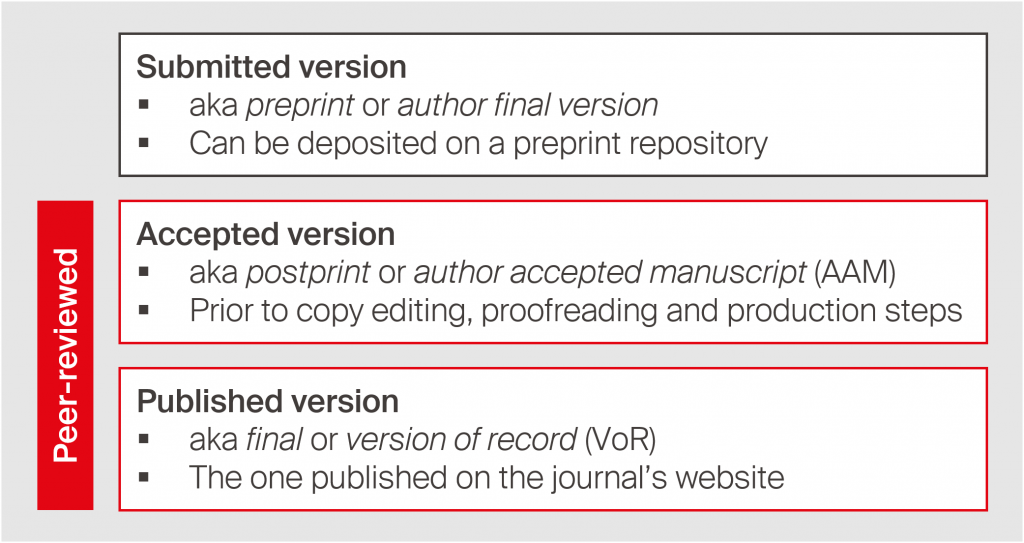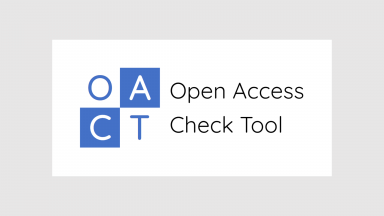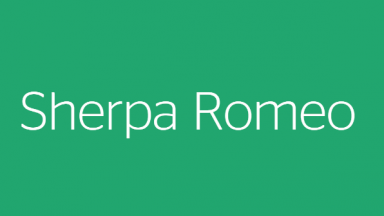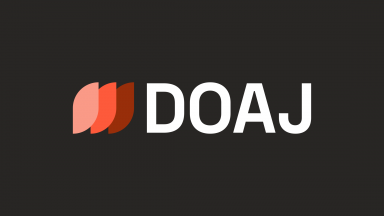Open Access (OA) is the barrier-free access to online works and other resources. OA literature is digital, online, free of charge, and free of needless copyright and licensing restrictions (Peter Suber, Open Access, The MIT Press, 2012).
Why publish Open Access
As part of the broader Open Science strategy, EPFL is strongly committed towards OA. Since 2019, EPFL has adopted a policy that defines the institutional requirements for the dissemination of publications written by EPFL researchers according to the principles of OA.
This policy requires that EPFL authors publish all of their research results in OA, choosing among the Green, Gold, or Diamond roads. In addition, the policy also states that all manuscripts need to be deposited in Infoscience at the moment of publication. An exception exists for the Green Road: in this case, articles should be made accessible in OA no later than 6 months after publication (12 months for books).
EPFL also supports several Swiss and international initiatives for the promotion of OA, many of which fall within the framework of the Global Sustainability Coalition for Open Science Services (SCOSS). Founded in 2017, SCOSS is a network of over 300 institutions committed to securing the non-commercial infrastructures on which the Open Science community depends. Below are listed some of the OA services within the SCOSS framework that EPFL is currently funding:
arXiv is an OA repository and free distribution service for more than 2.3 million scholarly articles in the fields of physics, mathematics, computer science, electrical engineering and systems science, quantitative biology, quantitative finance, statistics, and economics. Most manuscripts collected in arXiv are preprints, meaning they are not peer-reviewed.
The Directory of Open Access Journals (DOAJ) is an extensive and trusted index of OA publications, driven by a global community. The basic criteria for inclusion in the directory have become a gold standard for OA publishing.
Dryad is an Open Data publishing platform enabling the curation, open sharing and routine reuse of research data in all fields. Dryad’s goal is to make it easier to publish, find, use, and cite research data.
First released in 2002, DSpace is a web application and repository software that enables researchers to publish all types of documents and data. It works as a digital archives system, focused on the long-term storage, easy access and preservation of digital content.
LA Referencia is a federated network of Open Science repositories from more than a hundred Latin American universities and research institutions. Through its platform and services, LA Referencia supports national OA strategies, collecting and sharing articles and theses, and giving visibility to the scientific production of the participating institutions.
Redalyc was established in 2003 as an OA journal index and article-hosting platform. Its infrastructure now provides services to more than 1’400 OA peer-reviewed journals published by 670 institutions. AmeliCA is a community-driven communication infrastructure for Open Science, focusing on non-profit publishing models. AmeliCA and Redalyc took concerted actions to strengthen the Diamond OA publishing model beyond the Global South.
The Research Organization Registry (ROR) is a global, community-led registry of open persistent identifiers for research organizations. ROR provides a simple solution to the problem of identifying affiliations, connecting institutions to the authors and to their research outputs without ambiguity.
Sherpa Romeo is an online resource that aggregates and presents publishers’ OA policies on a journal-by-journal basis, providing summaries of self-archiving permissions and conditions of rights given to authors.
How to publish Open Access
There are several ways to ensure that a scientific publication is freely accessible to everybody. These OA options are usually referred to as “Roads”, and the most common are the Green, Gold, Hybrid, and Diamond Roads.
The Green Road to OA consists in depositing scientific contributions (articles, conference proceedings, books and book chapters) in an open repository. The repository can be either institutional (Infoscience at EPFL) or thematic (arXiv, PubMed Central, etc.). The Green OA conditions are defined by the journal’s copyright policy, and they specify how long to wait before self-archiving the publication (embargo period), which repositories are compliant, as well as which version of the manuscript can be deposited (submitted, accepted or published). In general, publishers do not allow the dissemination of the published version (also called final or version of record) but allow the deposit of the accepted version (also called postprint or author accepted manuscript), which is the version after peer-review but prior to any copy editing, proofreading and production steps. Embargo, version and the other publishing conditions can be verified with the Open Access Check Tool (OACT), on the Sherpa Romeo database, on the chosen journal’s website or asking the Publishing Support team of the EPFL Library.

The Gold Road consists in publishing scientific contributions in a journal or book that is entirely OA. All journals and books that qualify as Gold OA are listed in the Directory of Open Access Journals (DOAJ) or the Directory of Open Access Books (DOAB). Online access to Gold publications is free of charge and immediate for everybody. In general, choosing this option implies some publication costs, usually referred to as:
- Article Processing Charge (APC)
- Book Processing Charge (BPC)
- Book Chapter Processing Charge (BCPC)
These fees are charged directly to the corresponding author, the author’s institution or the funder of the research project. When authors affiliated with EPFL do not have dedicated funds to cover such costs, the Library can contribute – under certain conditions – through the EPFL Library Gold OA fund. On top of that, the Library regularly negotiates agreements with certain publishers to obtain discounts on the processing charges. All information on the available opportunities of financial support at EPFL can be found here.
The Hybrid Road is sometimes considered as an alternative form of Gold OA. It consists of publishing an article in a subscription journal (i.e., a traditional closed-access journal) and paying for the OA option at the article level. The article then becomes immediately and freely accessible for everybody, but all the other articles within the same journal for which the authors did not pay the APC remain in closed access. Since the access to hybrid publications is financed by both the subscription to the journal and the payment of the OA option, this practice is often referred to as “double dipping”. For this reason, EPFL (like many funders, including the Swiss National Science Foundation) does not contribute financially to this type of charges, unless they are provided for within a Read&Publish agreement previously negotiated with the publisher.
The Read&Publish licenses fall under the umbrella of the transformative agreements sometimes negotiated between a publisher and one or more institutions, like the EPFL Library or the Consortium of Swiss Academic Libraries (CSAL). These controversial agreements aim at transforming the business model of academic journals, shifting it from being based on the payment of subscription fees for reading access to the payment of APC for editorial services of OA publishing. In a Read&Publish license, reading and publishing rights are combined within a single agreement, and institutions (via their libraries) take full charge of the corresponding fees. Note that even if Read&Publish licenses mostly pertain to hybrid journals (as they are meant to help in overcoming the double dipping issue regarding these publications) such agreements sometimes also include a selection of Gold OA journals from the same publisher. For EPFL authors, publishing their scientific contributions in a journal included in a Read&Publish license means they can benefit from waived APC. All the details about the current agreements that EPFL has in place with several publishers are available at the Financial support for Open Access page.
The Diamond Road to OA (sometimes also called Platinum Road) refers to a publication model that is simultaneously free of charge for authors and readers. This means that authors can publish, distribute and preserve their academic texts for free, and at the same time everybody can read Diamond OA publications without paying any subscription fees. In contrast with the traditional business model of commercial publishing companies, Diamond journals and platforms are usually directly owned and run by academic and scientific communities. As stated by cOAlition S (an initiative that promotes the full and immediate OA to all research publications), the Diamond model is equitable by nature and design, “serving a fine-grained variety of generally small-scale, multilingual, and multicultural scholarly communities” (link).
Choosing the OA option has another important advantage when compared to the traditional closed-access publication model. In the latter, authors usually transfer most of their rights to the publisher when signing the publishing contract. Instead, the Gold and Diamond Roads (as well as the Hybrid one) allow authors to decide which rights they want to retain and how others are allowed to use their publication (share, use, build upon, etc.). The EPFL Library advises to use Creative Commons licenses: these are pre-formulated basic licenses for works protected by copyright. According to the principles of OA, this choice allows for an easier and faster reuse of your works, ensuring great diffusion and visibility. Further information on the Creative Commons licenses can be found on the Fast Guide #3.
OA policies and funders’ requirements
EPFL
Aim
EPFL actively supports the dissemination and promotion of the scientific output produced by its researchers. The Institution aims to ensure the best visibility for their research results, in order to contribute to the dissemination of knowledge and outreach of EPFL and its authors. EPFL is committed to supporting its researchers in their publishing activities. This policy applies to all peer reviewed publications with an EPFL contribution.
How to
This policy requires that EPFL authors publish all of their research results in OA, choosing among the Green, Gold, or Diamond roads. In addition, the policy also states that all manuscripts need to be deposited in Infoscience at the moment of publication. An exception exists for the Green Road: in this case, articles should be made accessible in OA no later than 6 months after publication (12 months for books). This requirement is not always compliant with the minimum embargo period defined by the Green Road policy of the selected journal, and may need to be negotiated with the publisher. In order to support the authors in this negotiation, an Amendment to the publisher agreement and an Accompanying message are proposed to the EPFL authors. Further information on this topic can be found in the Fast guide #2.
Validity
The policy went into effect on 12.02.2019.
Switzerland
Aim
The Swiss National Strategy on OA aims to achieve the following objective: by 2024, all scholarly publication activity in Switzerland should be OA, all scholarly publications funded by public money must be freely accessible on the internet.
How to
The strategy supports a combined approach of different roads to OA, as indicated in the Action Plan (available in French and German).
Validity
The strategy was adopted on 31.01.2017.
Link
Swissuniversities – National Strategy and Implementation Plan
Aim
The Swiss National Science Foundation (SNSF) requires its grantees to make the results of their research projects available in OA publications or databases.
How to
All roads to OA (Gold, Green, Hybrid, Diamond) are compliant with SNSF requirements.
- Gold OA: Researchers can apply for a grant through ChronosHub to cover OA publishing costs. This fund is not linked to the grant budget and can be requested even after the end of the project.
- Please note: for projects submitted from 01.01.2023, the SNSF requires a CC BY license for all published articles.
- From February 2024, the SNSF will no longer fund articles in Special Issues. The regulation applies to articles submitted to the publisher from 1 February. More information can be found here.
- Hybrid OA: This road is compliant with the funder’s requirements, but the corresponding publishing costs are not covered by the SNSF’s OA fund.
- Please note: for projects submitted from 01.01.2023, the SNSF requires a CC BY license for all published articles.
- Green OA: This road is compliant provided that the embargo period does not exceed 6 months for articles and 12 months for books and book chapters.
- Please note: for projects submitted from 01.01.2023, the embargo for scientific articles is no longer permissible, and the accepted version must be deposited in an institutional repository under a CC BY license.
Validity
The policy went into effect on 01.04.2018.
Additional conditions apply from 01.01.2023.
International
Aim
All peer-reviewed scientific publications that arise from Horizon Europe funding must be made available in OA immediately upon publication and with no restrictions on use.
How to
All roads to OA (Gold, Green, Hybrid, Diamond) are compliant with Horizon Europe requirements.
- Gold OA: The OA publication fees are eligible for reimbursement for the duration of the project. These costs must be included in the project proposal budget. Authors must also upload the published version of the article to a trusted repository no later than the time of publication. Articles must be published under a CC BY licence.
- Hybrid OA: This road is compliant with the funder’s requirements; however, the associated publication costs are not eligible for reimbursement.
- Green OA: No later than the time of publication researchers must upload the accepeted manuscript or published article to a trusted repository for scientific publications (i.e., no embargo period is allowed). A CC BY licence must be chosen for articles, and a CC BY-NC, CC BY-ND or equivalent licence for monographs and other long texts.
Validity
The requirements went into effect on 01.01.2021.
All the Horizon Europe requirements apply.
Researches must submit all accepted manuscripts that arise from NIH funding to PubMed Central (PMC) immediately upon acceptance for publication.
Compliance check
The Open Access Check Tool (OACT) is an online resource, tailored to the needs of the Swiss academic community, that gathers the most important information concerning OA publishing. Its main goal is to guide researchers in deciding where and how to publish their work in compliance with funders’ requirements and institutional policies.
Sherpa Romeo and the Directory of Open Access Journals (DOAJ) are complementary resources to the OACT, providing insights into journals’ policies on OA pathways, copyright and license terms, publication fees, and more.

OACT
Compare OA publication conditions of research institutions, funders and scientific journals.

Sherpa Romeo
Verify the publishers’ OA policies and self-archiving permissions on a journal-by-journal basis.

DOAJ
Check if a journal is Gold OA in this extensive and trusted index of OA publications.
Predatory journals
EPFL researchers are sometimes contacted and offered to publish their results in journals – mostly OA – run by predatory publishers. These profit-greedy publishers, whose operations are not very transparent, cannot guarantee any quality or scientific integrity. The proofreading and editing stages are almost always non-existent and the manuscript is generally put online immediately after submission.
Therefore, publication in these journals has very little scientific value and can damage the reputation of both the researcher and the EPFL. Moreover, once the research output has been published in a predatory journal, it will not be possible to re-submit it to another journal. In general, this type of publishers directly reaches out to researchers by email to solicit the publication of scientific articles in their journals, but similar predatory practices can also be found in the context of conferences or thesis publication.
In case of any doubt about the editorial quality of a journal or publisher, consulting the professional recommendations of the Committee on Publication Ethics (COPE) can be very useful, as well as verifying if the journal is listed in the DOAJ or if it can be found in bibliographic databases such as Scopus, Web of Science, etc. It is also important that researchers make their own assessment by reading a few articles from these journals and seek advice from colleagues and peers. The website Think, Check, Submit also provides valuable information about predatory publishers, while the corresponding Think, Check, Attend is a great resource to recognize and avoid predatory conferences.
In general, before considering any journal for publication, researchers should always verify that the following requirements are met:
- Communications: Received emails and website content are of high quality.
- Editorial board: Editors and committee members (editorial or advisory board) are experts in the field; the editor is responsible for a single journal.
- Contacts: Contact information is available and requests are always answered.
- Publication process: Submission steps, peer review process, and publication charges are all clearly indicated.
- Journal’s scope: The topics and expectations of the journal are well defined and coherent.
- Identifiers: The journal has an ISSN and publications have DOIs.
- Copyright: Information on the transfer of rights, conditions of reuse, and license types are available on the journal’s website.
Other useful resources include:
- Quality Open Access Marker (QOAM): Website collecting the evaluation provided by academic authors about their experience with OA journals
- Compass to publish: Online tool that helps to identify predatory journals and publishers (developed by the ULiège Library)
- Retraction Watch: Tracking of article retractions related to fraud or weaknesses in the publishing system
Do not hesitate to contact the [email protected] if you have any questions about predatory publishing.